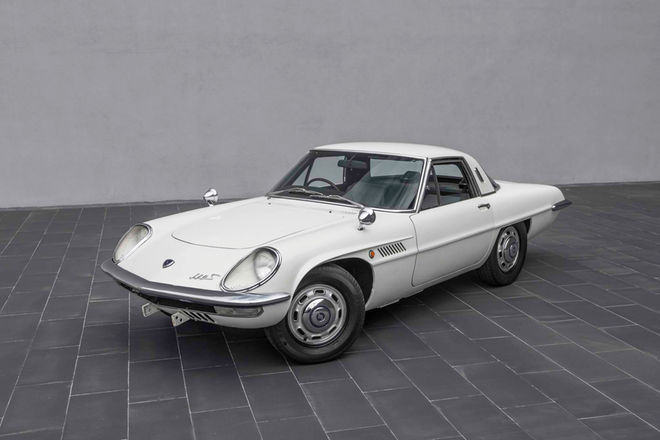Who knew? – It’s the 50th anniversary of the Mazda rotary engine. Mazda is the only carmaker to mass-produce and bring to market the rotary engine. Had it not been for the uniqueness of the rotary engine, there would probably be no Mazda. In the 1950s and 1960s, Japan’s Ministry of International Trade and Industry wanted to streamline the number of carmakers. Thinking that bigger manufacturers would be more likely to compete with US and European heavyweights, Mazda was afraid they would be vulnerable to a forced merger.
But a carmaker pioneering a bold new type of engine would be much more likely to maintain its independence. The unconventional rotary engine appealed to fans and offered a distinct reason to buy a Mazda. The successful introduction of the rotary-powered Cosmo Sport in 1967 launched Mazda as an influential carmaker.

Other carmakers tried and failed to make the rotary engine a success. The engine design was created by Felix Wankel in the early 1950s, and Mazda licensed the technology from West German carmaker NSU in the early 1960s. The rotary engine is an internal combustion engine that uses spinning rotors instead of pistons. The advantages of a rotary over a piston engine were its compact size, light-weight design, and high power for its size. Some disadvantages were increased oil consumption, decreased fuel economy, and higher emissions levels compared to similarly sized piston engines.

Early on, Mazda struggled with engine design problems, but persistence allowed them to overcome issues with internal engine seals, excessive oil consumption, and lack of low-end torque. In the 1970s one-half of the Mazda’s sold were powered by rotary engines. In 1972 alone, over 100,000 rotary-powered vehicles were sold in the United States.
Mazda’s rotary engines made their way into many different models of vehicles and left their mark in the record books of many legendary road races. The rotary engine was last used in 2012 in the Mazda RX-8 and has since been benched. Working to realize the ideal internal combustion engine, Mazda returned to the drawing board and built the SKYACTIV-G gasoline engine and SKYACTIV-D diesel engine from scratch. While these address the fuel economy and emissions demands, Mazda continues research and development on rotary designs.

While only a concept car, the RX-VISION revealed at the 2015 Tokyo Motor Show is envisioned with a low overall height and incredibly low hood made possible by the compact and lightweight next-generation SKYACTIV-R rotary engine. The same year, Mazda also applied for several patents on rotary designs, and they have also developed a tiny single-rotor 330 cc unit, which generates on-board power for an electric Mazda2. The small rotary motor generates supplemental electric power for the batteries, allowing a range of nearly 250 miles. Rotary engines are also well suited to using hydrogen as a fuel, and Mazda has built a number of experimental hydrogen-powered rotaries that are currently being tested.
Mazda is not giving up on rotary technology and neither are Mazda rotary fans. An annual festival known as Sevenstock will celebrate it’s 20th anniversary on November 4, 2017 in Fontana, California. Known as the largest annual gathering of Mazda rotary enthusiasts in the world, Sevenstock will be attended by thousands of attendees from around the globe who will view hundreds of rotary vehicles, including many historic race cars.

Who knew? – Fifty years of rotary engine designs and the research continues. We are also not giving up on having a steady supply of Mazda rotary engine replacement parts. Alan Webb Mazda is a major supplier of rotary parts in the Pacific Northwest and a great source for all of your genuine Mazda parts and accessory needs. Check out the on-line catalog at MazdaPartsPeople.com for discount pricing on genuine Mazda accessories.

